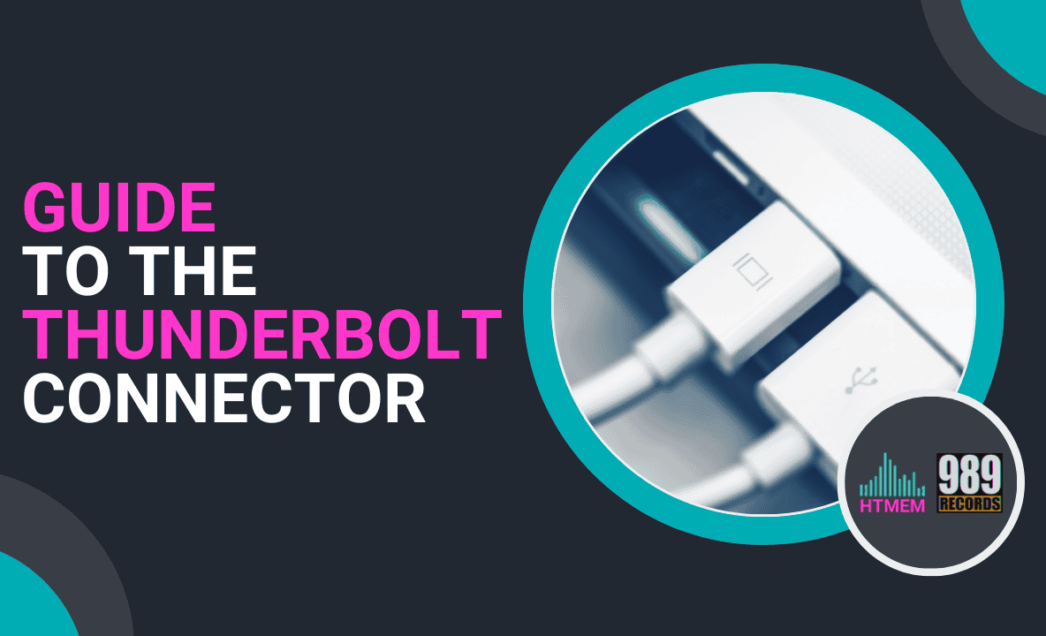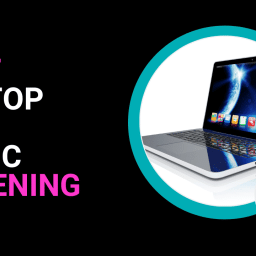Introduction
In the world of connectivity, the Thunderbolt connector stands out as a revolutionary technology that combines speed, power, and versatility. Thunderbolt support offers significant advantages over USB-C, including higher data transfer rates and compatibility with professional applications. Developed by Intel in collaboration with Apple, Thunderbolt technology offers unparalleled data transfer speeds and the ability to connect multiple devices through a single cable. This guide delves into Thunderbolt’s features, benefits, and applications, providing insights into its comparison with USB-C and USB 4, and its impact on various fields such as gaming and creative applications.
What is Thunderbolt?
Thunderbolt is a hardware interface designed to connect external peripherals to a computer. It combines PCI Express (PCIe) and DisplayPort (DP) into two serial signals, delivering direct current (DC) power through a single cable. This innovation allows up to six peripherals to be supported by one connector through various topologies, making it a versatile choice for users. The Thunderbolt symbol, typically located near the USB-C port, helps users identify whether their device supports Thunderbolt 3 or 4.
Thunderbolt vs USB-C
While USB-C and Thunderbolt 3 & 4 share the same oval-shaped USB-C connector, they are distinct technologies with different capabilities and features. Thunderbolt 3 and 4 utilize the USB C connector, whereas earlier versions, Thunderbolt 1 and 2, used the Mini DisplayPort connector. USB C Thunderbolt provides superior performance and capabilities through Thunderbolt™ technology, offering optimal speed and versatility in connecting devices. Understanding the key differences between USB-C and Thunderbolt is crucial for making informed decisions about which technology best suits your needs. Not all USB-C ports support Thunderbolt functionalities, affecting device performance and connectivity options.
Thunderbolt Versions
Thunderbolt technology has evolved over the years, with each version offering enhanced features. Thunderbolt ports have advanced significantly, providing faster data transfer rates and the ability to connect multiple devices through a single port, while maintaining compatibility with USB-C.
- Thunderbolt 1 and 2: Utilized the Mini DisplayPort connector.
- Thunderbolt 3 and 4: Adopted the USB-C connector, providing faster data transfer speeds and higher power delivery.
- Thunderbolt 5: The latest version, offering even faster data transfer speeds and higher power delivery.
Thunderbolt Features
Thunderbolt offers a range of features that make it a standout choice for connectivity:
- Faster Data Transfer: Speeds up to 40 Gbps.
- Higher Power Delivery: Up to 100W, ideal for charging larger devices.
- Multiple Displays: Supports up to two 4K displays or one 5K display.
- External Graphics: Enhances gaming performance.
- Single Cable Solution: Connects multiple devices, including displays, storage, and peripherals.
Additionally, the Apple Pro Display XDR utilizes Thunderbolt 3 for optimal performance, ensuring high-resolution displays and efficient data transfer.
Thunderbolt Benefits
The benefits of Thunderbolt technology are numerous:
- Faster Data Transfer: Ideal for applications requiring high-speed data transfer.
- Higher Power Delivery: Suitable for charging larger devices.
- Multiple Displays: Enhances multitasking and productivity.
- Single Cable Solution: Reduces clutter and improves organization.
Using a Thunderbolt dock further expands connectivity options by allowing multiple devices to connect through a single Thunderbolt cable, ensuring high-speed data transfer and compatibility with USB-C devices.
Thunderbolt Security
Thunderbolt technology is potentially vulnerable to direct memory access (DMA) attacks. Nevertheless, for Thunderbolt 4 Host Certification, Intel VT-d-based DMA protection is a mandatory requirement.Firmware-enforced boot security measures, such as UEFI Secure Boot, mitigate Option ROM attacks, while proper security measures can address vulnerabilities to data exposure attacks like Thunderspy.
Thunderbolt Adapters and Thunderbolt Cable
Thunderbolt cables and adapters facilitate the connection of Thunderbolt devices to USB-C ports. Active Thunderbolt cables are essential for longer distances and higher data transfer speeds, while passive cables are available for shorter distances and lower speeds.
Thunderbolt Docks and Hubs
Thunderbolt docks and hubs expand the connectivity options of a laptop or desktop computer, offering a range of ports, including HDMI, Ethernet, and USB-A. These docks often include an ethernet port, allowing users to expand their network options and ensure reliable internet access. They are ideal for connecting multiple devices to a single Thunderbolt port. Additionally, an HDMI port on these docks facilitates easy connection to displays, often without the need for an adapter if the Mac has an HDMI port.
Thunderbolt and Gaming
Thunderbolt technology is a game-changer for gaming applications, offering faster data transfer speeds and higher power delivery. It supports external graphics and multiple displays, providing an immersive gaming experience.
Thunderbolt and Creative Applications
For creative professionals, Thunderbolt offers faster data transfer speeds and higher power delivery, supporting multiple displays for multitasking and productivity. It also enhances performance in graphics-intensive applications.
Technical Comparison: Thunderbolt vs USB 4
- Data Transfer Speeds: Thunderbolt offers up to 40 Gbps, while USB 4 offers up to 20 Gbps.
- Power Delivery: Both provide up to 100W.
- Display Support: Thunderbolt supports multiple displays, while USB 4 does not.
Thunderbolt support also provides higher data transfer rates and compatibility with professional applications, making it a superior choice for daisy-chaining devices, rapidly transferring large files, and connecting multiple high-resolution displays.
Setting Up a Thunderbolt Connection
Setting up a Thunderbolt connection is straightforward: connect a Thunderbolt cable to a Thunderbolt port on your computer and a Thunderbolt device. Use an active Thunderbolt cable for longer distances and higher data transfer speeds, and configure your computer to recognize the Thunderbolt device, setting up any necessary drivers or software.
Troubleshooting Common Issues
Even with the advanced capabilities of Thunderbolt technology, users may occasionally encounter issues. Here are some common problems and their solutions to help you maintain a seamless Thunderbolt connection.
Conclusion
Thunderbolt is a powerful technology that offers faster data transfer speeds, higher power delivery, and support for multiple displays. It is ideal for applications that require high-speed data transfer, such as gaming and creative applications. With its single cable solution and range of adapters and cables, Thunderbolt is a convenient and versatile technology for connecting multiple devices. As the technology continues to evolve, it remains at the forefront of connectivity solutions, offering unmatched performance and versatility for both personal and professional use.
References
- Intel Corporation. (n.d.). Thunderbolt™ Technology. Retrieved from Intel’s Official Website
- USB Implementers Forum. (n.d.). USB4™ Specification. Retrieved from USB-IF’s Official Website
- Dell Technologies. (n.d.). Thunderbolt™ 4: The Future of USB-C Connectivity. Retrieved from Dell’s Official Website
- VESA. (n.d.). DisplayPort Alt Mode on USB Type-C. Retrieved from VESA’s Official Website
Suggested Readings
The Best Apple Computer for Music Production
Practice and Enjoy!










